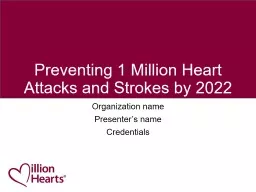PPT-How Many Million
Author : alida-meadow | Published Date : 2017-07-22
BIOSes Would you Like to Infect Corey Kallenberg amp Xeno Kovah About us We do digital voodoo Newly independent as of January 2015 The only company focused
Presentation Embed Code
Download Presentation
Download Presentation The PPT/PDF document "How Many Million" is the property of its rightful owner. Permission is granted to download and print the materials on this website for personal, non-commercial use only, and to display it on your personal computer provided you do not modify the materials and that you retain all copyright notices contained in the materials. By downloading content from our website, you accept the terms of this agreement.
How Many Million: Transcript
Download Rules Of Document
"How Many Million"The content belongs to its owner. You may download and print it for personal use, without modification, and keep all copyright notices. By downloading, you agree to these terms.
Related Documents














